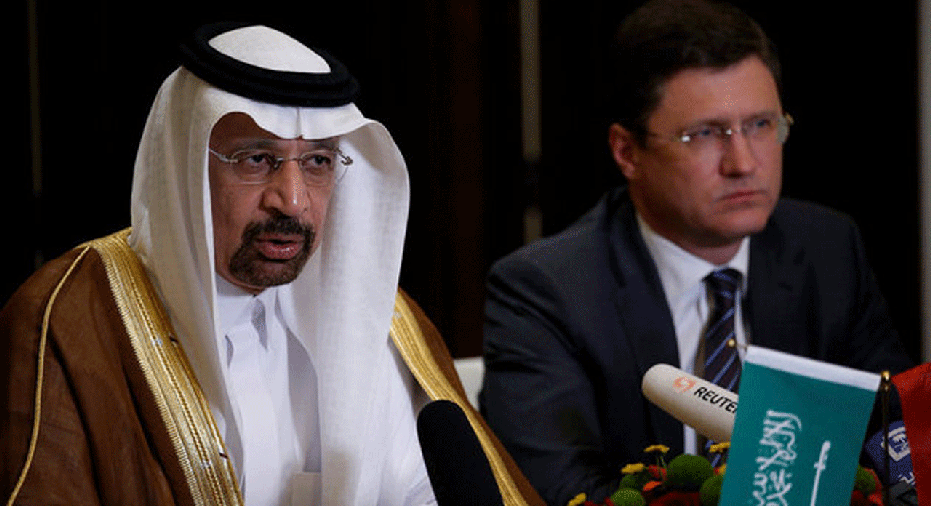Oil Rises 2 Percent After Saudi and Russia Back Longer Supply Cut

Oil jumped 2 percent to its highest in more than three weeks on Monday, topping $52 a barrel after Saudi Arabia and Russia said that supply cuts need to last into 2018, a step towards extending an OPEC-led deal to support prices for longer than first agreed.
Energy ministers from the world's two top producers said that supply cuts should be prolonged for nine months, until March 2018.
That is longer than the optional six-month extension specified in the deal, and shows that the battle to reduce overall supply has been more difficult than originally anticipated, in part because of rising U.S. production.
The ministers said they hoped other producers would join the cut, which would initially be on the same volume terms as before.
Global benchmark Brent crude settled up 98 cents, or 1.9 percent, at $51.82 a barrel, having touched $52.63, the highest since April 21. U.S. crude ended $1.01 firmer at $48.85 a barrel, a 2.1 percent gain.
Oil traders were surprised by the strong wording of the announcement, though it remained to be seen whether all countries participating in the deal would agree with the Saudi-Russian stance when they meet to decide policy on May 25 in Vienna.
"Today’s announcement will likely further extend the oil price rebound started last week on decent stock draws and low positioning," said analysts at Goldman Sachs in a note. They noted the rally has been modest so far, compared with last year's move when cuts were first announced.
The Organization of the Petroleum Exporting Countries, Russia and other producers originally agreed to cut output by 1.8 million barrels per day in the first half of 2017, with a possible six-month extension, in a bid to shore up prices.
Oil has gained support from the deal but inventories remain high and rising output from other producers, including the United States, is keeping prices below the $60 that top exporter Saudi Arabia would like.
Some analysts said that U.S. production could still threaten to disrupt the market balance unless the cuts were deepened.
"We are of the camp that the extension cuts might not be enough - they might need to extend the cuts and to increase them to stabilize this market," said Oliver Sloup, director of managed futures at iitrader.com.
U.S. production is currently forecast to average about 9.31 million bpd this year - a level reached already, according to government figures. Sloup says it could surpass that if buoyed by higher prices.
Some analysts doubted that the producers would stick to a prolonged curb.
"Extending the cuts until March 2018 would take account of the fact that demand in the first quarter of a year is lowest for seasonal reasons," said Commerzbank analyst Carsten Fritsch.
"We are skeptical about Russia's willingness to actively participate in any extended cuts."
(Additional reporting by Henning Gloystein in Singapore and Alex Lawler in London; Editing by Marguerita Choy and David Goodman)



















